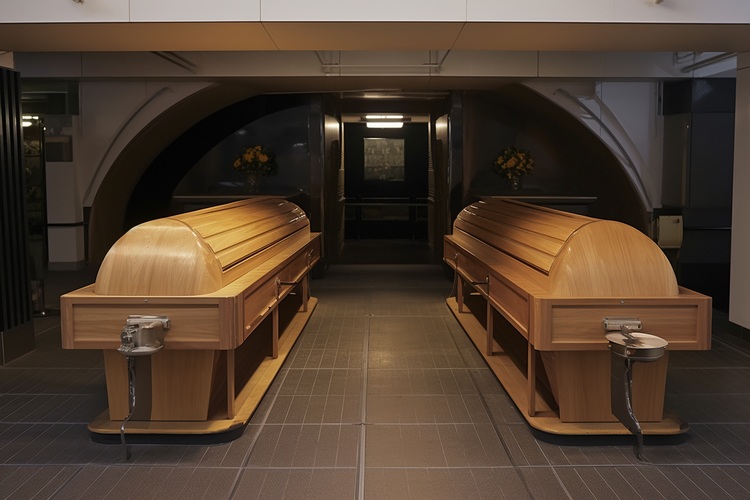Cremation in 2025 — What You Should Know About the Process and Costs
Cremation has become an increasingly chosen option in 2025, but many still don’t fully understand how the process works or what’s actually involved. From preparation to final memorial choices, today’s cremation services offer more flexibility than ever. Here’s what families need to know before making this important decision.

How does the cremation process work step by step?
The cremation process follows a systematic approach designed to treat remains with dignity and respect. Initially, the deceased is prepared through washing and dressing, followed by proper identification procedures to ensure accuracy throughout the process. The body is then placed in a combustible container or casket and transferred to the cremation chamber, also known as a retort.
During the actual cremation, temperatures reach between 1400 to 1800 degrees Fahrenheit, reducing organic matter to bone fragments over approximately two to three hours. After cooling, any metal objects like surgical implants or jewelry are removed, and the remaining bone fragments are processed into fine particles using specialized equipment. The resulting cremated remains, weighing typically between four to eight pounds for adults, are then placed in a temporary container or an urn selected by the family.
What modern cremation options are available today?
Contemporary cremation services offer various options to meet different preferences and budgets. Traditional cremation involves the complete process described above, while direct cremation eliminates funeral home services like viewing or ceremonies beforehand, focusing solely on the cremation itself. Memorial services can be held separately at any time after cremation, providing flexibility for families to plan meaningful celebrations of life.
Green cremation, also known as alkaline hydrolysis or aquamation, uses water and alkaline solutions instead of fire, resulting in a more environmentally friendly process. Bio-cremation reduces energy consumption and eliminates mercury emissions from dental fillings. Some facilities also offer witness cremation, allowing family members to be present during the initial stages of the process for additional closure and peace of mind.
What should families know when planning for cremation?
Planning for cremation requires understanding legal requirements and documentation needs. In Canada, families must obtain proper death certificates and cremation permits before proceeding. Most provinces require a waiting period, typically 24 to 48 hours after death, before cremation can occur. Families should also consider whether they want any viewing or visitation services, as this affects preparation requirements and timing.
Religious and cultural considerations play important roles in cremation planning. While many faiths now accept cremation, some maintain specific requirements or preferences regarding the handling of remains. Families should discuss these considerations with their funeral director and religious leaders when applicable. Additionally, deciding on final disposition of cremated remains—whether scattering, burial, or keeping in an urn—should be determined in advance to ensure compliance with local regulations.
What is the typical timeline for cremation and receiving remains?
The cremation timeline varies depending on several factors, including legal requirements, facility scheduling, and family preferences. After death occurs, obtaining necessary documentation typically takes one to two business days. Once all paperwork is complete and any required waiting periods have passed, the actual cremation process can be scheduled.
Most cremation facilities complete the process within 24 to 48 hours of receiving the remains, though scheduling may extend this timeframe during busy periods. Processing cremated remains into final form usually adds another day to the timeline. Overall, families can generally expect to receive cremated remains within three to seven business days after initial arrangements are made, assuming all documentation is properly completed and no complications arise.
How do cremation costs compare among different providers?
Cremation costs vary significantly across Canada, influenced by location, service level, and provider type. Understanding these variations helps families make budget-conscious decisions while ensuring quality care for their loved ones.
| Provider Type | Basic Direct Cremation | Full Service Cremation | Additional Services |
|---|---|---|---|
| Large Funeral Homes | $2,500 - $4,000 | $5,000 - $8,500 | Viewing: $800-$1,500 |
| Independent Funeral Homes | $1,800 - $3,200 | $4,200 - $7,200 | Memorial Service: $1,000-$2,500 |
| Cremation-Only Providers | $1,200 - $2,500 | $3,500 - $5,500 | Urns: $100-$1,000+ |
| Online/Direct Providers | $995 - $1,995 | $2,800 - $4,500 | Transportation: $200-$500 |
Prices, rates, or cost estimates mentioned in this article are based on the latest available information but may change over time. Independent research is advised before making financial decisions.
Direct cremation typically costs significantly less than full-service options that include viewing, ceremonies, or elaborate caskets. Geographic location affects pricing substantially, with urban centers like Toronto and Vancouver commanding higher prices than rural areas. Additional costs may include urns, death certificates, flowers, and memorial services, which can add several thousand dollars to basic cremation fees.
The growing cremation industry has introduced more competitive pricing structures, with some providers offering package deals or payment plans to help families manage costs. Comparing multiple providers and understanding exactly what services are included in quoted prices helps families avoid unexpected expenses while securing appropriate care for their loved ones.
Cremation continues evolving as families seek personalized, meaningful ways to honor deceased loved ones while managing practical considerations like cost and environmental impact. By understanding available options, timelines, and pricing structures, families can make confident decisions that reflect their values and circumstances during challenging times.




